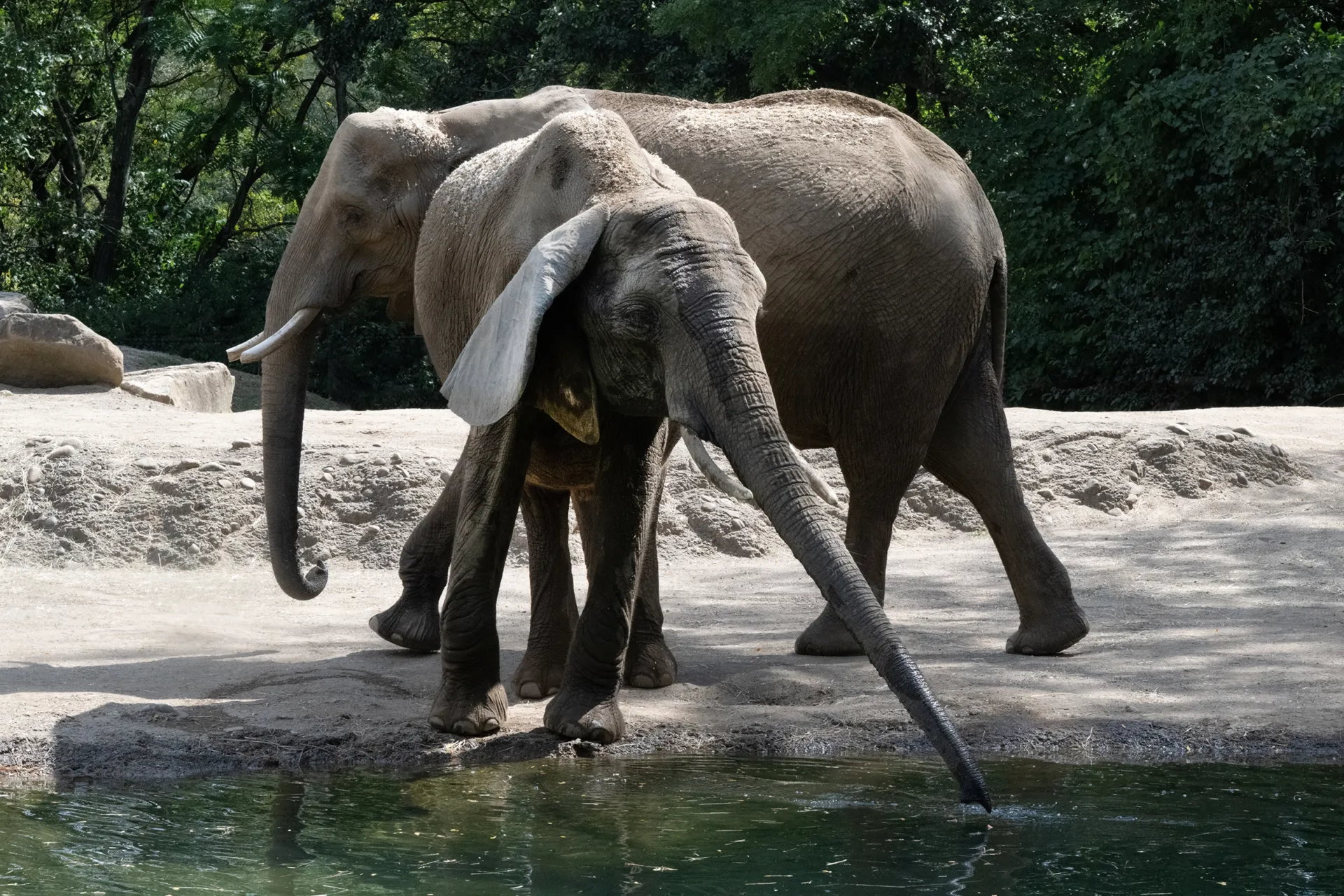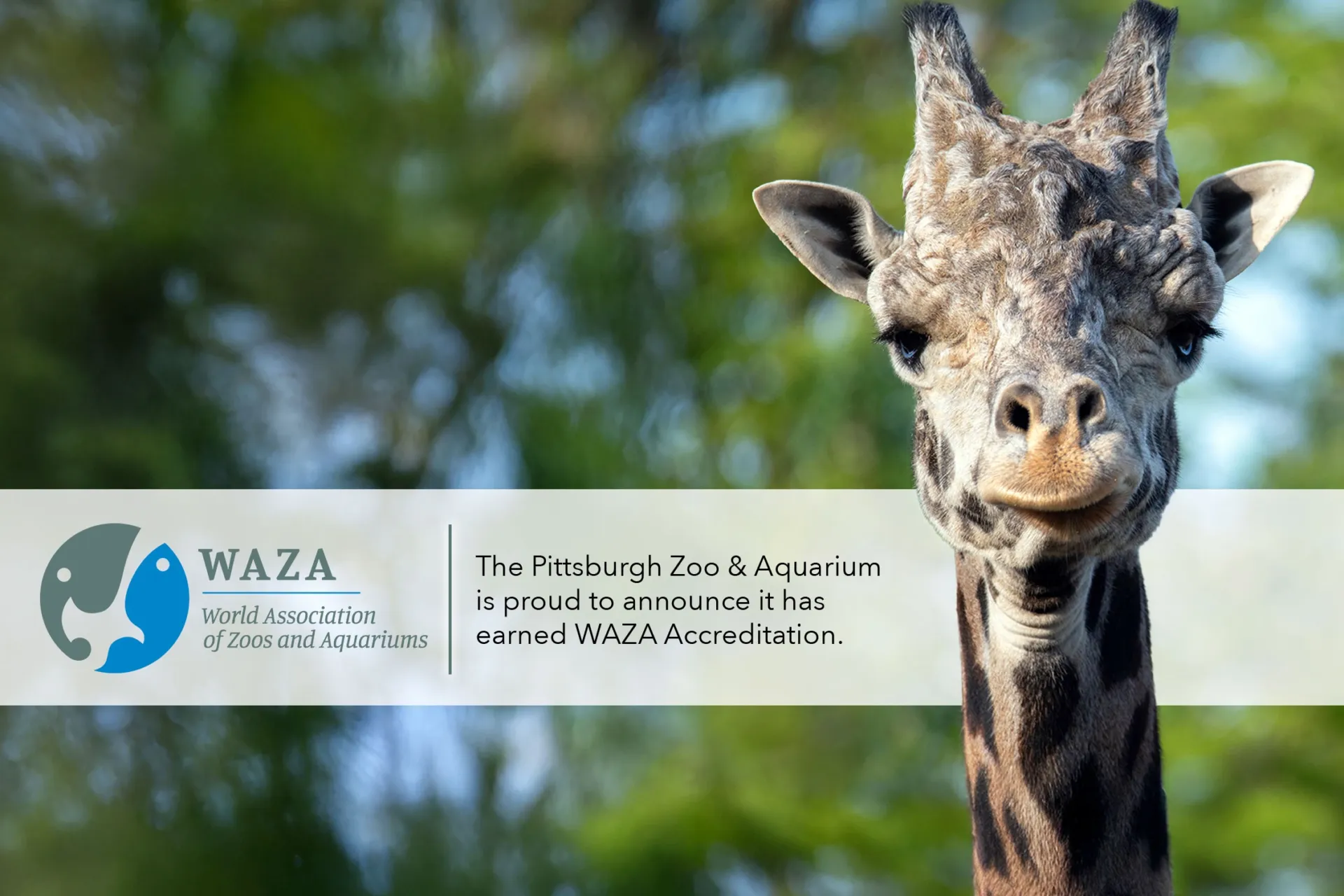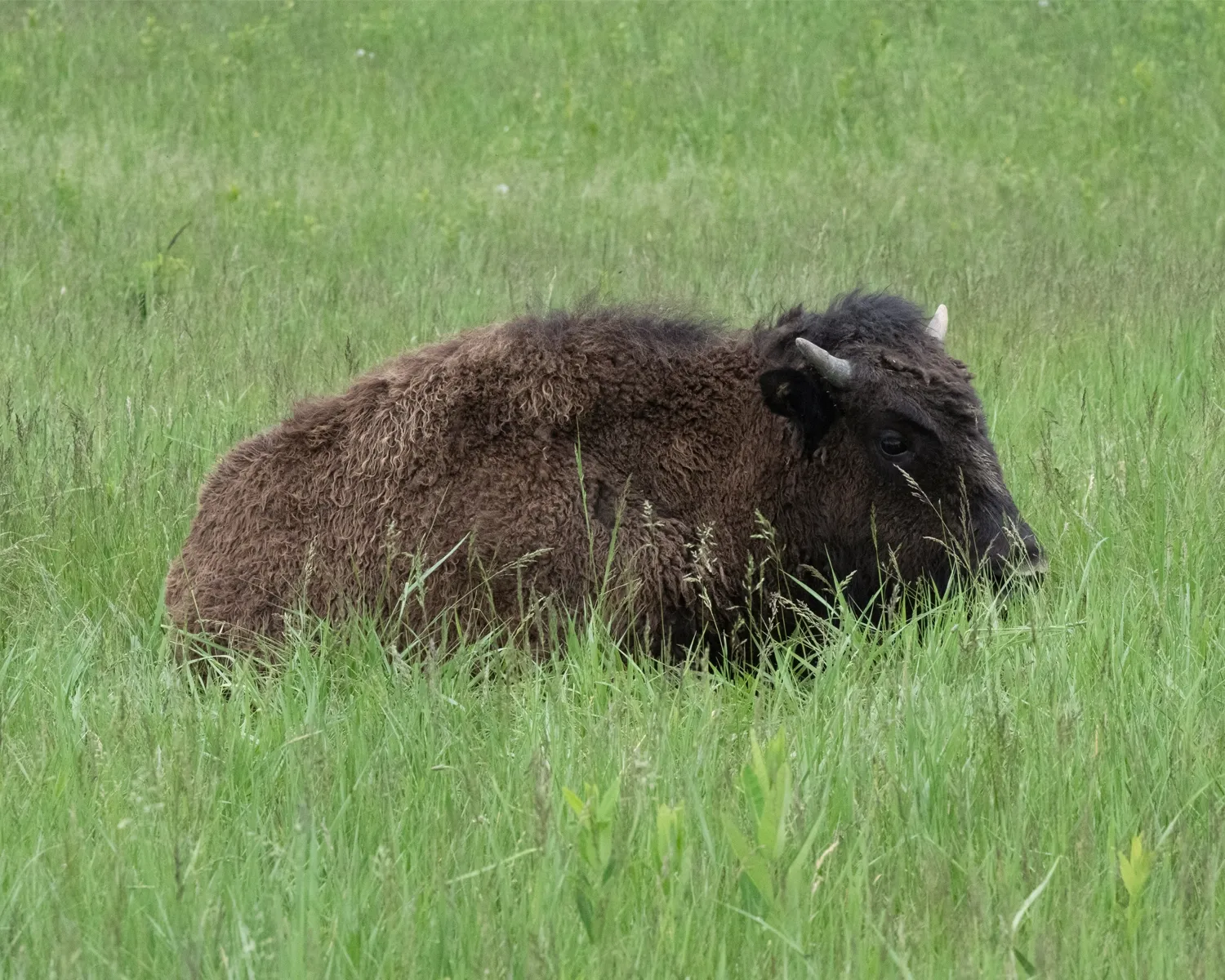It’s a Great Day for Birds in Pittsburgh!
July 11, 2025
The Pittsburgh Zoo & Aquarium announces the addition of some new players to the Kids Kingdom lineup – Humboldt penguins and brown pelicans! The penguins, warm weather South American birds, and their scoop-beaked companions from the coasts of the Americas, have settled outdoors in the former sea lion pool in Kids Kingdom. (The previous occupants have merged into a single sea lion community in Water’s Edge, making room for this rookery of rookies.)
Humboldts are the Zoo’s third penguin species – their colder climate cousins, gentoo and macaroni penguins prefer their chilly habitat in the Aquarium. Six penguins came from the Philadelphia Zoo: males, Fausto, Charlie Chaplin, Tribbiani, Juice, and Topper, and female, Geller. Four of the birds arrived from Seattle’s Woodland Park Zoo: males, Cruz and Lando, and females, Peso and Zara. The penguins range in age from one to 17 years old. The Pittsburgh Zoo also received a shipment of eggs from the Columbus Zoo that hatched to reveal one female, Lillie, and two male chicks, Dave and Pippin. In total, thirteen Humboldt penguins make the roster. All of the relocations were recommendations from the Association of Zoos and Aquarium’s Humboldt penguin Species Survival Program. The program is excited to have the Pittsburgh Zoo and Aquarium join it and intends to make the zoo a significant breeding center for this species.
“Penguins are near and dear to the hearts of Pittsburghers, so adding another species in addition to the Aquarium’s current population of penguins is a natural fit for both the Zoo’s mission and civic pride,” says Zoo President & CEO Dr. Jeremy Goodman. “The birds provide a vital conservation message concerning the plight of penguins this species faces.”
The medium-sized penguin is native to the rocky cliffs and shores of Chile and Peru. It is known there as pajaro-niño, which translates to “baby bird” since their waddling gait with wings held out resembles an infant toddling on the beach. Named for explorer and naturalist Alexander von Humboldt, the black-and-white penguins have patches of bare pink skin around their eyes and beaks that help with heat regulation. They depend on the cold-water Humboldt current for their favorite schooling fish, such as sardines and anchovies.
Humboldt penguins are considered vulnerable according to the International Union for Conservation of Nature’s Red List of Threatened Species. The birds build their nests on cliff tops, rock crevices, and in guano burrows. Seabird guano is a major fertilizer export, and guano harvesting is harmful to penguin colonies. There are less than 30,000 Humboldt penguins left in the wild. Approximately 500 individuals are in breeding programs in the United States.
Also new to the team are three brown pelicans: female Felicity, and males Joey and Pierre. They came to the Zoo from Seacoast Seabird Sanctuary in Indian Shores, Florida. The pelicans were rescued and have permanent wing injuries that left them unable to hunt their food correctly and were deemed non-releasable by the Florida Fish and Wildlife Conservation Commission. These birds are easily recognized by their gular pouch, a thick layer of skin located on the lower mandible and connected to the throat. These pelicans use their pouch to scoop fish out of the water, hold the catch for its chicks, or cool itself on a hot day. Brown pelicans were listed as an endangered species in the 1970s but rebounded considerably and were taken off the list in 2009. They are protected under the Migratory Bird Act.
You can show your support for the new lineup by visiting their avian arena in Kids Kingdom. Plan your visit today!






